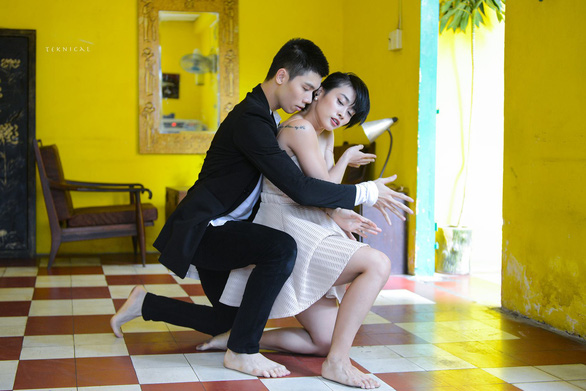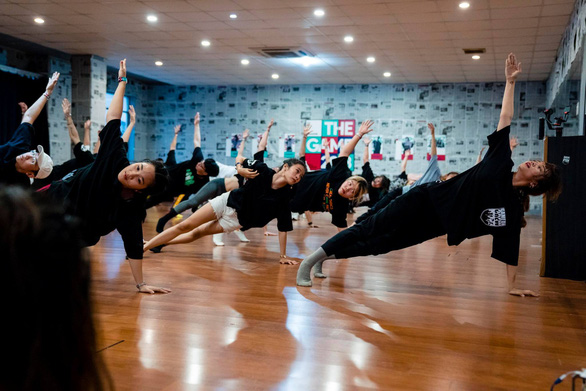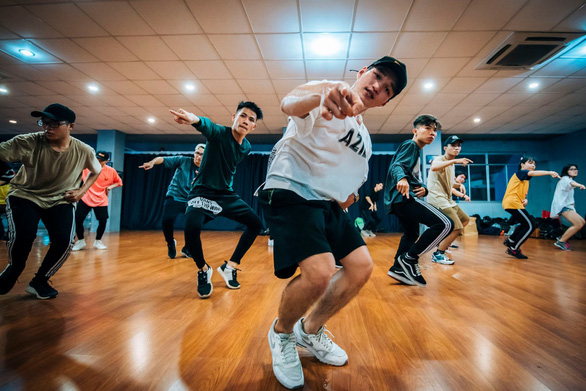In recent years, there has been a dramatic increase in the number of dance groups in response to a surge in demand and the development of Vietnam’s entertainment industry.
Despite their hard work and effort put, these dancers do not live in the spotlight like actors, actresses, or singers.
Moreover, this profession is still being stigmatized by the society that does not truly understand the struggles these people have to go through.
Dire injuries
Huy Nguyen, one of the independent dancers based in Ho Chi Minh City, discusses the most common struggles of dancers in the city with Tuoi Tre (Youth) newspaper.
Professional dance groups always have difficulty maintaining the number of dancers in their troupes while freelance dance groups struggle with finding shows to perform in order to earn money, according to the independent dancer.
These injuries not only affect the dancers’ health and career but also their income. Injuries are unavoidable in this physically demanding job.
In one of the practices, Huy’s shoulder got dislocated as the dancer was carrying a female performer with one hand.
The male dancer had to rest for over a month for a complete recovery.
“This job does not offer a fixed salary. Not performing means no income,” Huy explained how brutal and drastic the profession can be at times.
Many injuries result in permanent damage but the dancers still have to forget the pain, sometimes with the help of pain-killers, to perform.
 |
| Pham Thi Ngoc Anh and her dancing partner in one of their dance videos. Photo: Facebook |
Pham Thi Ngoc Anh is one of the well-known dancers in Vietnam and the first runner-up of So You Think You Can Dance.
At first the female dancer participated in the competition so as to be able to visit her mother who was living in Ho Chi Minh City at that time because after she passed the audition round, the competition organizer was going to sponsor her flight to the southern hub.
The 25-year-old dancer shared with Tuoi Tre her struggle when she first became a dancer despite her success in the famed dancing competition.
“When I first started dancing, I agreed to every offer including performing with singers, in events, and teaching at dance centers to provide for myself,” Anh said.
Just like other dancers, her early success in the competition did not spare her from late-night practices and health-damaging working habits.
“Because during the day everyone has other things to do, practice usually starts at 10:00 pm and normally lasts until 1:00 to 2:00 am,” Anh explained, indicating that most dancers need to have more than one job.
Stigmatized profession despite hard work In order to perform onstage, all dancers had to go through merciless practices and hours of work. However, their profession is still being prejudiced against as many people believe most dancers resort to the profession only because they were unable to finish their academic studies.
Quang Dang, a 29-year-old professional dancer who once graduated in business administration from Hoa Sen University in Ho Chi Minh City, provides Tuoi Tre with an insight into this matter.
It is difficult to blame the stigma when most dancers are only high school graduates, says Dang.
“Audiences are not wrong, dancing is a prejudiced job and most dancers are not keen on studying. Neither do they have many degrees. However, that does not mean they are uneducated people,” the dancer defends his profession, implying that sometimes viewers are too quick to judge people based on academic qualifications and achievements.
Most dancers started working at a tender age, as it requires a lot of effort, time, and health. Others spent most of their time practicing for performances, which also prevented them from attending school and paying attention to classes.
 |
| Dancers from Game on Crew group practices for their performance. Photo: Supplied |
Even though most dancers do not have a proper education background, they all have ethics and are knowledgeable, a former So You Think You Can Dance competitor said.
“There are many dancers who won international awards for our country,” he said.
“Hence, I hope the audience will evaluate dancers based on core human values rather than the time spent in the classroom.”
Many dancers, especially female ones, are accused of intentionally becoming indecent and wearing stunning make-up.
Minh Trang, a 24-year-old dancer, is now used to being named a “prostitute” whenever performing at bars and clubs.
“Everyone wants to see sexy and enthusiastic performances, but then they use these against us to assume we do not have a decent education,” Trang complained.
“Being a dancer, we have to practice to be able to perform, which requires both mental and physical effort. Yet the public has not been fair with us.”
Increase in demand for dancers
There are currently around 50 professional dance groups in Hanoi and Ho Chi Minh City.
Some well-known groups include Hoang Thong, ABC, Oh, Grammy, and Rex, among others.
A great increase in the number of dance groups partially results from the public’s sudden interest in television shows and musical events, with Ho Chi Minh City perceived as the biggest market in Vietnam.
Another factor that has contributed in this trend is a surge in the number of dance competitions between 2010 and 2015.
The most notable television competitions preferred by Vietnamese audiences include So You Think You Can Dance, Vietnam’s Got Talent, and Buoc nhay hoan vu (Dancing with the Stars), among others.
However, recently these shows have become less popular and ceased to appeal to the audience. Many professionals believe it is due to the ubiquity of dancing shows in the previous years, which might have become too repetitive to attract viewers.
Like us on Facebook or follow us on Twitter to get the latest news about Vietnam!





















































